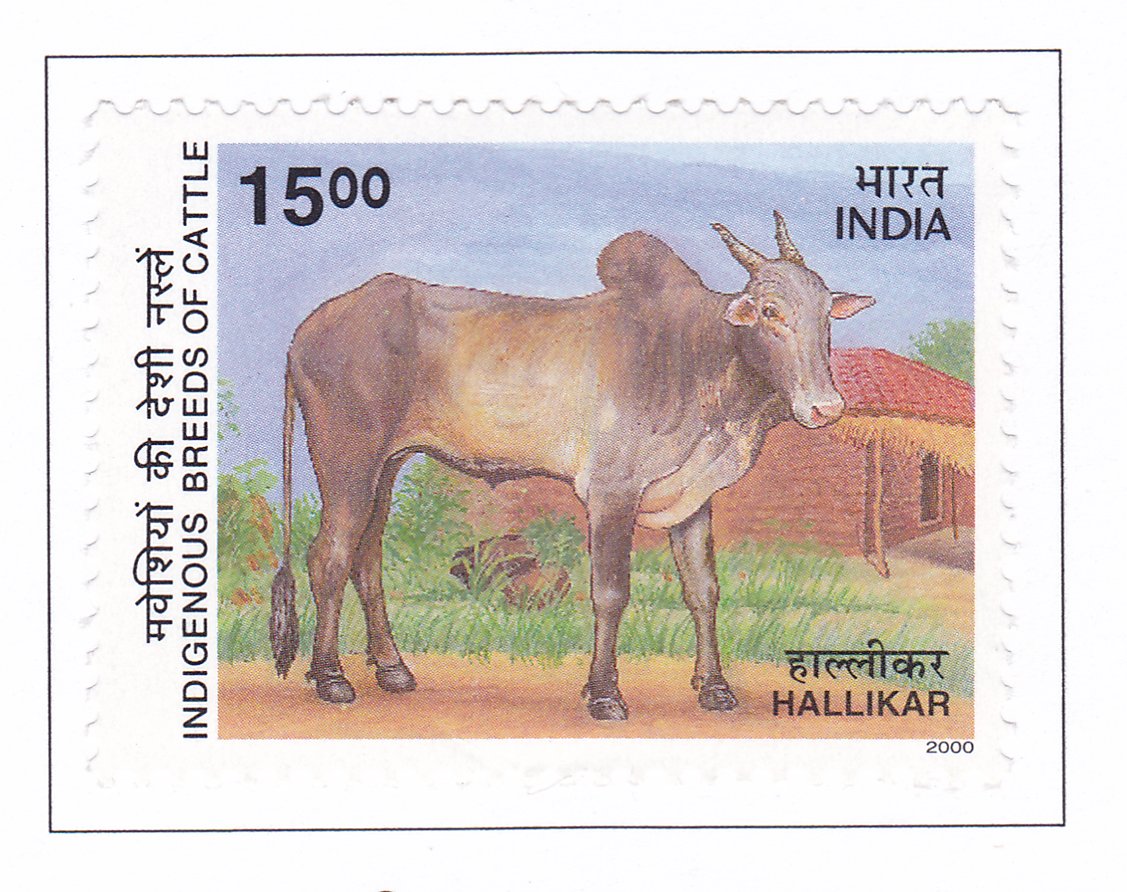Hallikar Zebu (Bos primigenius indicus)

Technical Data
| Stamp Set | Indigenous Breeds of Cattle |
|---|---|
| Date of Issue | April 25, 2000 |
| Denomination | Rs. 15 |
| Quantity | 800,000 |
| Perforation | comb 13½ x 13 |
| Printer | Calcutta Security Printers Ltd |
| Watermark | No Watermark |
| Colors | Multicolor |
| Catalog Codes |
Michel IN 1758 Stamp Number IN 1819 Yvert et Tellier IN 1524 Stanley Gibbons IN 1922 |
| Themes | Animals (Fauna) | Cattle | Mammals |
Table of Contents
Hallikar Zebu (Bos primigenius indicus)
Overview:
- Scientific Name: Bos primigenius indicus
- Common Name: Hallikar Zebu
- Origin: Karnataka, India (particularly in the Hallikar region)
Design Elements:
- Stamp Features: A detailed depiction of the Hallikar Zebu, highlighting its unique characteristics such as its compact body, narrow bulging forehead, and sweeping, concave horns.
- Artwork Style: The design would focus on capturing the breed’s distinctive physical traits, including its robust build and horn shape. The background might reflect the typical rural landscapes of Karnataka.
- Background: The setting could include elements representing the agricultural environment of Karnataka, emphasizing the breed’s role in farming.
Cultural and Historical Significance:
- Historical Context: The Hallikar Zebu is known for its strength and endurance, making it a valuable draught animal in Karnataka. It has been used historically for ploughing and other agricultural tasks.
- Cultural Impact: This breed is integral to traditional farming practices in Karnataka, contributing significantly to the agricultural economy and cultural heritage of the region.
Usage:
- Postal Use: Suitable for correspondence related to agriculture, rural development, or regional heritage.
- Philatelic Collection: Collectors interested in livestock breeds, agricultural history, and biodiversity would find these stamps valuable.
Importance of the Commemorative Stamp Set:
- Educational Value: Highlights the significance of the Hallikar Zebu in Indian agriculture, particularly its role as a draught animal in Karnataka.
- Conservation Message: Raises awareness about the need to preserve indigenous breeds and their contributions to traditional farming and rural economies.
Example of the Stamp Design:
- Visual Description: The stamp would feature a realistic illustration of the Hallikar Zebu, showcasing its compact body and distinctive horns. The background might depict agricultural scenes typical of Karnataka to reflect the breed’s native environment.
The Commemorative Stamp Set Might Include:
- Denominations: Various denominations to cater to different postal needs.
- Information: Brief descriptions on the stamp or accompanying materials explaining the breed’s characteristics, origins, and importance in agriculture.
Significance:
- Preservation of Heritage: Celebrates the Hallikar Zebu’s role in India’s agricultural heritage and the importance of conserving indigenous livestock breeds.
- Highlighting Biodiversity: Acknowledges the diversity of cattle breeds and their contributions to traditional farming practices and rural livelihoods.
